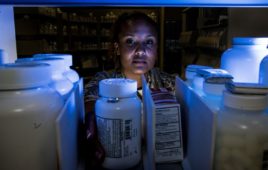As indicated in a recent article in Controlled Environments1, there is a new standard ASTM method for determining non-volatile residue (NVR) in implantable biomedical devices2. The standard includes extraction and testing methodology that is, in a sense, a compromise. On one hand, there is a desire on the part of the medical device community for narrowly defined specifications for solvent and extraction conditions. At the same time, there is a growing diversity of such devices in terms of size, materials of construction, configuration, and the residue/contamination from an increasing number and variety of process chemicals.
Round-robin Testing
The next step is to conduct round-robin testing (inter-laboratory comparison) to obtain precision and bias information. Given the many variables, a number of labs were needed for the study1. There was a good response, and in early November, 2005, the ASTM committee met in Dallas to plan the comparisontesting.
What a lively and productive meeting! One might expect sample extraction followed by gravimetric NVR determination to be straightforward and non-controversial. However, there are critical technical differences and firm convictions among analysts. For example, the standard calls for separating soluble from non-soluble residue; there are several reasonable techniques for doing this. Some groups choose not to filter the extract. In addition, the details of methods for extraction and of evaporation of the extract can profoundly influence the result3.
Controlling the Variables
It appears that the committee will proceed deliberately. At one end of the spectrum, each laboratory could be asked to independently select a solvent and extraction method, and the results would be compared. Given that the current standard provides for quite a bit of customization to the application in question, one might suspect that this approach would result in divergent test protocols and therefore in divergent results. Instead, a more modest, controlled approach is being taken in that the reproducibility and bias of sections of the standard will be tested under standard, defined conditions. Given the number of variables and differences of opinion, this would seemto be a prudent approach.
A Significant Study
The results of this inter-laboratory testing will be of immediate interest to those involved in manufacture of implantable medical devices and to governmental regulatory agencies. The findings should also be of interest to all groups involved in critical cleaning and contamination control, including researchers and manufacturers in such areas as aerospace, military, as well as micro-and nano-devices.
What is next?
It will be particularly interesting to see the way in which the ASTM method evolves as a result of this testing. The standard could become a fairly well-defined decision tree. Perhaps additional methods for NVR determination will be utilized. One example is NVR for organic contamination as determined by FTIR4. A portable FTIR5 can be used to estimate NVR as from a major hydrocarbon peak (2900 cm-1). While FTIR will not detect any inorganic components of the NVR, it does have the advantage of allowing a degree of identification of specific contaminants. A second example is a Quartz Crystal Microbalance (QCM) in which the frequency of vibration of a quartz crystal plate is inversely proportional to the mass6,7. The residue from evaporation of an extraction solvent is detected as increased mass. A QCM has an advantage over standardgravimetric methods of not requiring a large sample of solvent to be evaporated.
As these or other techniques become proven options, standards might be added. A compendium of pertinent analytical techniques, with provisos and geared to the requirements of manufacturers of implantable medical devices, is a distinct possibility. The challenge will be to determine by consensus the methods that are of most value to the medical device community.
References:
- B. Kanegsberg, S. Spiegelberg. “Reproducibility Testing for Medical Device Standard,” Controlled Environments, (October, 2005).
- ASTM F2459-05, “Standard Test Method for Extracting Residue from Metallic Medical Components and Quantifying via Gravimetric Analysis,” www.astm.org.
- B. Kanegsberg, E. Kanegsberg. “ASTM Symposium on Cleanliness of Implants,” Controlled Environments, (August, 2005).
- B. Kanegsberg, E. Kanegsberg. “FTIR Basics,” Controlled Environments, (January, 2006).
- M. Szczesniak, D. Sheikh. “Inspection for contamination with portable and imaging FTIR spectrometers,” SPIE proceedings, Vol. 4774, (2002).
- B. Kanegsberg, E. Kanegsberg. “Measuring Thin Films,” A2C2 Magazine, (March, 2003).
- A. Smith, H. Shirazi. “Principles of quartz crystal microbalance/heat conduction calorimetry: Measurement of the sorption enthalpy of hydrogen in palladium,” Thermochimica Acta 432, (2005) pp. 202–211.
Barbara Kanegsberg and Ed Kanegsberg are independent consultants in critical and precision cleaning, surface preparation, and contamination control. They are the editors of “Handbook for Critical Cleaning,” CRC Press. Contact them at BFK Solutions LLC., 310-459-3614;[email protected]; www.bfksolutions.com.



